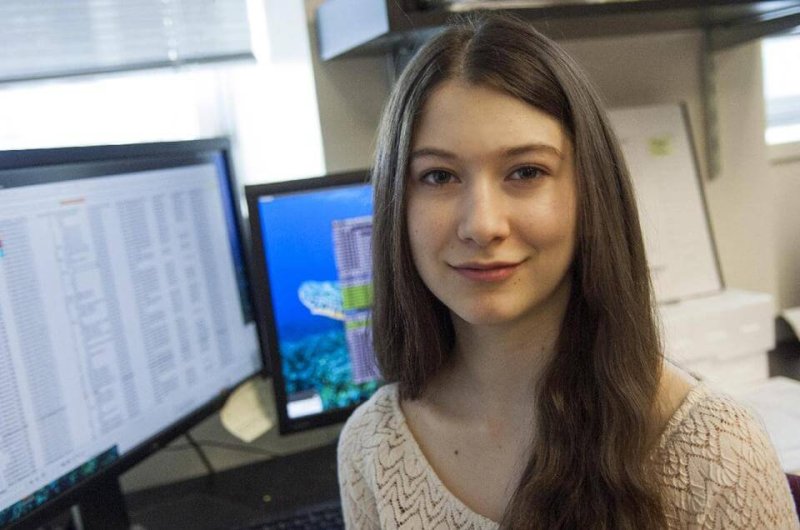What was the greatest accomplishment of your senior year of high school? A fun prom? Elana Simon, an 18-year-old graduating this spring, has published a “groundbreaking” genetic study of a rare cancer in one of the world’s most well-respected scientific journals. What’s more, Simon is a survivor of the cancer in question: she was diagnosed at 12 with fibrolamellar hepatocelluar carcinoma, a poorly understood liver cancer that is highly resistant to chemotherapy. She had most of her liver removed to excise the tumorous tissue and has since been living cancer free.
The study, published in the February 28 issue of Science, was a collaborative initiated by Simon with scientists at Rockefeller University, the Memorial Sloan-Kettering Cancer Center, and the New York Genome Center. Simon’s father, Sanford Simon, runs the Laboratory of Celluar Biophysics at Rockefeller University, and is the senior author on the study.
Though the scientists only studied the genomes of fifteen people, the data gathered was “astonishingly clear and consistent,” according to a New Yorker profile of Ms. Simon. All 15 patients showed the same specific mutation present only in their tumor cells and not in their healthy body cells. It’s a small sample size, but the complete novelty of the mutation coupled with the clear-cut nature of the data suggests a possible diagnostic test for a disease that has, until now, been difficult to diagnose.
According to the Wall Street Journal, at age 16, Elana Simon took an internship at the Mount Sinai School of Medicine and began a project examining the genetics of cancers and non-cancerous tissue from pancreatic cancer patients. “I wanted to go off and be my own scientist,” she told the WSJ.
Her work on pancreatic cancer was a mere warm-up, however. After learning first-hand during her work on pancreatic cancer about how fraught older people’s tissues are with confounding mutations, she decided to investigate the cancer that could have killed her by collecting tumor samples from young fibrolamellar patients. She soon had help from her surgeon, her father and a cadre of other experts, leading ultimately to this potential breakthrough for treating fibrolamellar cancer.
Elana Simon’s story is part of a “perfect storm” of technological advancements that is making genetic analysis available even to high school students, her father told the WSJ.
Simon herself seems to have a rare gift for inspiring collaboration. In addition to this paper, Simon also helped develop the Fibrolamellar Registry, a website for patients to share their medical information with each other and with interested researchers. The site already has support from clinicians, computer scientists, and the National Institutes of Health’s office of rare diseases, according to the New Yorker.
Elana’s story may seem like feel-good fluff; after all, her disease is rare and the breakthrough findings of her study do not represent a cure or even a definite diagnostic. Cancer claims almost 600 thousand lives in the U.S. each year, and there are only about 200 cases of fibrolamellar cancer diagnosed each year.
What makes this study and its circumstances so notable is not the clinical implication of the work, but what it represents for the future of medicine. As the New Yorker points out, Simon is living the open-access dream: the widespread availability of the tools of genomic analysis and collaborative research could make life-or-death differences for the people who suffer rare diseases that are difficult to combat in the traditional framework of large-scale medical studies.
Kenrick Vezina is Gene-ius Editor for the Genetic Literacy Project and a freelance science writer, educator, and amateur naturalist based in the Greater Boston area.
Additional Resources:
- Teen cancer survivor Elana Simon helps scientists study her own rare disease, The Independent
- Teen helps scientists study her own rare disease, Associated Press
- Elana Simon, 18, helps scientists study the rare form of liver cancer she survived, New York Daily News































